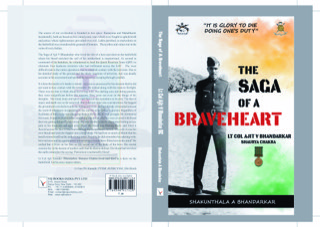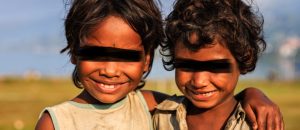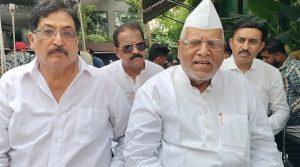Living Up To The Credo Of One’s Alma Mater

Maj Gen Jagatbir Singh, VSM
4th August 2021: “The Safety. Honour and Welfare of Your Country Come First Always and Every time” are the immortal words of Sir Philip Chetwode and are inscribed in the Chetwode Hall at the Indian Military Academy (IMA), Dehradun.
This credo has remained the moral compass for generations of officers who have passed out of its hallowed portals. Almost twenty-one years ago Lieutenant Colonel Ajit Bhandarkar attained martyrdom and joined many others who had lived by these values. This is his story.
‘The Saga of a Braveheart’ by Mrs Shakuntla Bhandarkar, wife of Late Lieutenant Colonel Ajit Bhandarkar, who laid down his life for the country on 30 October 1999 while personally leading a Quick Reaction Team to eliminate hardcore terrorists who had infiltrated across the Line of Control in Surankote, Jammu & Kashmir is special in many ways.
The book was written by his wife a Veer Nari who has wonderfully described Ajit’s journey till he attained martyrdom on that fateful day and gives the view from the perspective of his family and colleagues. It, therefore, gives the reader a rare glimpse into his personality, the values that guided him and the experiences that shaped him.
The book is wonderfully laid out and each chapter covers a facet of his journey, it includes pictures but what is more important is it also includes articles by various people who shared his experiences at that time and their input gives us a rare insight into his personality.
Ajit’s initial years were spent in Sainik School Bijaipur which he joined as a ten-year-old in 1970 and passed out in 1977 as the School Captain. An all-rounder he excelled in sports and academics but it was his empathetic nature and idealism that is remembered. His insistence on propriety in all his actions remained his hallmark. In 1999, his class donated a large amount of money which they contributed to the School and constructed’ Ajit Dwar’ in memory of his martyrdom and gallantry’. The strong bonding of the school remains a pillar of support throughout.
He joined the National Defence Academy (NDA), Pune, the’ cradle of leadership’ in January 1978 and was subjected to the rigours of training and the punishment system which develops a very special esprit de corps. He was in Golf Squadron and his depth of character stood out by always being on the side of his peers and constantly choosing the harder right than the easier wrong. His stellar qualities always stood out; you cannot hide anything from this band of brothers whose shared common experiences result in everlasting ties.
One of the people who influenced Ajit was Major (later Major General) DP Merchant, his Company Commander who was held in awe by the Gentleman Cadets at the Indian Military Academy. Lieutenant General Rajeev Sabharwal a coursemate recalls a hockey match in which all players but one had given up the fight in the first ten minutes itself, but Ajit never gave up and waged a lonely battle against a very superior team. “He showed us that winning or losing is part of life, but what matters ultimately is that have you done your best, have you performed to the call of duty when the chips are down.” At the end of the match, Major Merchant lauded his stellar efforts and said he would be proud if Ajit joined his battalion; 18 MADRAS (MYSORE).
On being commissioned into the MADRAS REGIMENT, Ajit went to their Centre in Wellington in the Nilgiris where he was familiarized with the traditions of the oldest Infantry Regiment of the Army. Standing in the most prominent place in Wellington, at the entrance to the prestigious Defence Services Staff College is the Memorial, with the words ‘Its Glory To Die Doing One’s Duty ‘inscribed and has the names of the martyrs of this fine Regiment. Little, did anyone realize that one day Ajit’s name would be part of this roll of honour, while ‘doing his duty’ and attaining martyrdom on the battlefield which is considered the greatest of honours.
On joining his battalion in December 1981, his first posting was in Sikkim. He was soon to experience that wonderful feeling of brotherhood and camaraderie. The book covers snippets of life in the battalion and its moves as well as appointments tenanted by him in diverse places including Sikkim, Secunderabad, Gandhi Nagar, J&K and Ferozepur. What stands out is his meticulous approach to any task assigned, unflappable nature and dependability. His regimental spirit and loyalty stood out when as a young officer he approached the Brigade Commander directly and voiced his concerns regarding the detailing of the Regimental band in a place in the deserts where their instruments were likely to be damaged. The Commander saw his point of view and cancelled the orders.
At the Officers Training Academy (OTA) in Chennai, Ajit as a young Captain motivated his Gentlemen Cadets to ensure they always excelled. At the same time, he instilled the qualities and values required by an officer in them. He ensured the toughening of their body, mind and spirit so they could face any challenge with courage and confidence. As per Colonel Vikas Dimri “he was adored and idiolised by the cadets” while Colonel PK Daka states “he was the best of the best”.
In January 1990 while at OTA, he met Shankuntala for the first time but he got posted back to his battalion in March and they got married in October that year in Chennai. She fondly recalls how he initiated her into the Army way of life and the culture and traditions of the battalions. Many happy days were spent in these wonderful environments.
In 1993, Ajit attended the Staff College Course at Wellington, where selected officers from the three Services are trained in command and staff functions. It is the stepping stone for professional growth and an extremely busy time for the student officers but also a place where one gets a chance to bond with one’s fellow students.
Brigadier Vikas Puri fondly recalls an incident during one of the exercises when Ajit had been quite oblivious of the fact that he was in the crosshairs of the Conducting Directing Staff (DS) for not participating in the discussions who told him he would be sent to hospital for a ’lockjaw’; needless to say the DS was soon taken aback by his sudden “josh”.
Post the Course he was posted as a Brigade Major to Nathu La where he assisted his Brigade Commander, Brigadier (later Major General) SV Thapliyal in setting up the first Border Personal Meeting with the Chinese delegation in September 1995.
Thereafter in 1996, he was posted to the Military Secretary’s Branch in Army Headquarters where he dealt with the career management and confidential reports of officers. Living as a family in a big city after the separation of a field area brought the family close together. Ajit had by now helped Shakuntla transform into a “confident and independent fauji’s wife“.
In June 1998 on being promoted to a Lieutenant Colonel, he was posted to 25 Rashtriya Rifles in Surankot as the Second-in-Command and with his dynamism soon ‘developed a firsthand understanding of the terrain, insurgent network and intelligence set up of the battalion and in July that year assumed control of an operation that resulted in the elimination of two hardcore terrorists.
30 October 1999, was the day that will remain etched in the memory of the family forever. This is the day Ajit volunteered to lead a quick reaction team to eliminate five hardcore terrorists who had infiltrated across the LoC. He was accurate in his assessment of their likely location and displaying rare gallantry, courage and bold leadership unmindful of any personal considerations he eliminated three of them but in the process took a bullet in his forehead and succumbed to his injuries. In view of his dedication, commitment and bravery he was awarded the Shaurya Chakra on 11 August 2000.
While the book is extremely easy to read and full of anecdotes, the essence is in what lies within the lines. Namely, the challenges faced by those who wear the uniform with pride, the unique bonding within the Army, the NDA Squadron ties and his course spirit, and the strength of the regimental family which becomes more important than one’s own home.
One of his close friends wondered “whether his life was worth the lives of a few worthless terrorists” but also stated that “I know Ajit won’t agree with me”. It’s an ethos that few outsides can comprehend fully but this is what drives young men in the prime of their youth to rise above the call of duty. The Regiment lends support in both visible and invisible means and this led to both his sons joining the Services while Nirbhay joined his father’s battalion to continue his legacy with pride, while Akshay joined the Navy.
This real-life story is very difficult to imagine but is extremely motivating and exposes the reader to the sacrifice and patriotism of not only Ajit but also Shakuntala, her two sons and the rest of their family. It takes a rare resolve to write such a biography.
And how can man die better
Than facing fearful odds,
For the ashes of his fathers,
And the temples of his gods”
― Thomas Babington Macaulay








